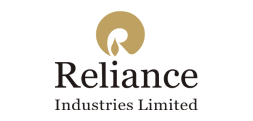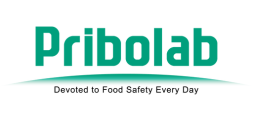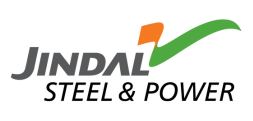- +91-8076660477
- info@cronax.co.in

lAMINAR AIR FLOW MANUFACTURER IN INDIA
In critical environments where contamination can jeopardize processes, Laminar Air Flow (LAF) emerges as the silent guardian, ensuring a controlled and sterile atmosphere. Let’s delve into the intricacies of Laminar Air Flow, its utilization, features, technical nuances, and diverse applications.
What is Laminar Air Flow?
Laminar Air Flow (LAF) is a controlled and continuous stream of highly filtered air moving in parallel, typically within a specific direction, to maintain a clean and sterile environment. LAF systems are commonly used in various industries, including pharmaceuticals, healthcare, electronics, and laboratories, where maintaining a controlled and particle-free space is crucial.
How Laminar Air Flow Works:
1. Air Filtration:
LAF systems incorporate High-Efficiency Particulate Air (HEPA) or Ultra-Low Penetration Air (ULPA) filters. These filters remove airborne particles, microorganisms, and contaminants from the incoming air.
Unidirectional Airflow:
The filtered air is directed in a single, uniform direction within the working area. This unidirectional airflow helps minimize turbulence and ensures a constant, sterile environment.
2. Parallel Air Streams:
Laminar Air Flow creates parallel streams of air that move at a consistent velocity. The direction of airflow can be either horizontal or vertical, depending on the application and cleanliness requirements.
3. Preventing Contamination:
LAF systems establish a clean and sterile working zone by preventing external contaminants from entering the controlled space. This is achieved by maintaining a higher air pressure inside the clean area compared to the surrounding environment.
4. Customizable Air Velocity:
Many LAF systems allow users to adjust the air velocity according to specific cleanliness requirements. This customization ensures optimal conditions for various processes.
5. Microprocessor Control:
Advanced LAF systems are equipped with microprocessor-based control panels. These controls enable users to monitor and regulate critical parameters such as airflow velocity, filter status, and system alarms.
6. Safety Features:
LAF systems incorporate safety features to ensure the safe and efficient operation of the system. Alarms and interlock systems alert users to abnormal conditions, maintaining a secure working environment.
Contact Us
Applications of Laminar Air Flow:
Pharmaceuticals:
- Drug Manufacturing: Cleanrooms are essential for pharmaceutical companies to produce medications with precise formulations and minimal contamination.
- Sterile Compounding: Cleanrooms are crucial for compounding sterile drugs and aseptic processing to ensure patient safety.
Microelectronics and Semiconductor Manufacturing:
- Wafer Fabrication: Cleanrooms are used in semiconductor manufacturing to control particle contamination during the fabrication of integrated circuits on silicon wafers.
- Microprocessor Assembly: Assembling microprocessors and other electronic components requires a clean environment to prevent damage from dust and particles.
Biotechnology:
- Biological Research: Cleanrooms are used in biotechnology laboratories for research involving sensitive biological materials to prevent contamination and maintain controlled conditions.
- Cell Culture: Cleanrooms play a crucial role in maintaining sterile conditions for cell culture and bioprocessing.
Medical Device Manufacturing:
- Implantable Devices: Manufacturing devices like pacemakers, stents, and other implantable medical devices requires a clean environment to ensure patient safety.
- Diagnostic Equipment: Production of precision medical diagnostic equipment demands cleanroom facilities to maintain high standards of quality.
Aerospace and Defense:
- Satellite Assembly: Cleanrooms are used in aerospace industries for the assembly of satellites and spacecraft, ensuring the reliability of electronic components.
- Defense Technology: Manufacturing of sensitive defense technologies requires cleanroom facilities to maintain operational reliability.
Optics and Photonics:
- Lens Manufacturing: Precision optics and lens manufacturing require cleanrooms to prevent dust and particle contamination, ensuring optical clarity.
- Photonics Research: Cleanroom environments are critical for research in photonics and optics to maintain the purity of experimental conditions.
Food and Beverage:
- Food Packaging: Cleanrooms are employed in the food industry for the packaging of sensitive and sterile products to ensure hygiene and quality.
- Beverage Production: Cleanrooms play a role in maintaining the cleanliness of facilities involved in the production of beverages, especially those requiring aseptic conditions.
Hospitals and Healthcare:
- Operating Rooms: Hospital operating rooms operate as cleanrooms to minimize the risk of infections during surgical procedures.
- Pharmacies: Compounding sterile medications in hospital pharmacies requires cleanroom conditions.
Automotive Industry:
- Painting and Coating: Cleanrooms are used in automotive manufacturing for painting and coating processes to prevent dust and particle contamination.
- Assembly of Sensitive Components: Assembling electronic components in automotive systems requires clean environments to ensure reliability.
Key Features of Laminar Air Flow:
Unidirectional Airflow:
- Provides a controlled and consistent flow of clean air in a single direction, minimizing cross-contamination.
High-Efficiency Filtration:
- Equipped with HEPA or ULPA filters to remove particles, ensuring a sterile working environment.
Adjustable Air Velocity:
- Allows customization of airflow velocity to meet specific cleanliness requirements for different applications.
Clear Work Zone:
- Offers a clear and obstruction-free work area for conducting sensitive operations and experiments.
Sturdy Construction:
- Built with durable materials such as powder-coated steel or stainless steel for long-lasting performance.
Microprocessor-Based Controls:
- User-friendly control panel with digital display for easy adjustment of settings and real-time monitoring.
Low Noise Emission:
- Operates quietly, providing a conducive and comfortable working environment.
Integrated Lighting:
- Built-in illumination to ensure proper visibility within the work area.
Safety Alarms and Interlocks:
- Audible and visual alarms for abnormal conditions.
- Interlock systems prevent unauthorized access during operation.
Optional UV-C Disinfection:
- Integration of UV-C germicidal lamps for enhanced disinfection capabilities.
Easy to Clean:
- Surfaces made of stainless steel or other non-reactive materials for easy cleaning and maintenance.
Certified Compliance:
- Meets industry standards and certifications, ensuring adherence to cleanroom classifications.
Technical Specifications of Laminar Air Flow:
Airflow Type:
- Unidirectional laminar flow, ensuring a continuous and controlled stream of clean air.
Air Velocity:
- Adjustable airflow velocity to meet specific cleanliness requirements.
- Typical range: 0.3 to 0.5 meters per second (m/s).
Filter Efficiency:
- High-efficiency particulate air (HEPA) or ultra-low penetration air (ULPA) filters.
- Removal of particles ≥ 0.3 micrometers with efficiency exceeding 99.99%.
Work Area:
- Clear and unobstructed work zone for conducting sensitive operations.
- Options for horizontal or vertical laminar flow configurations.
Material Construction:
- Outer frame: Powder-coated steel or stainless steel for durability.
- Work surface: Stainless steel or other non-reactive materials for easy cleaning.
Control System:
- Microprocessor-based control panel for regulating airflow velocity and monitoring conditions.
- Digital display for accurate settings and real-time monitoring.
Noise Level:
- Low noise emission for a comfortable working environment.
- Typically ranges from 50 to 70 decibels.
Lighting:
- Integrated illumination to ensure proper visibility within the work area.
- Options for fluorescent or LED lighting.
Safety Features:
- Audible and visual alarms for abnormal conditions.
- Interlock systems to prevent unauthorized access during operation.
Optional Features:
- UV-C germicidal lamps for additional disinfection.
- Magnehelic pressure gauge for filter condition monitoring.
- Casters for mobility and flexibility in positioning.
Certifications:
- Compliance with industry standards such as ISO 14644-1 for cleanroom classifications.
- Validation documentation ensuring adherence to specifications.
WHY CRONAX?

7,00,000+ Trusted Customers

450+ Team Size

24/7 Customer Support

Certified Products

Global Presence

Pan India Free Delivery*
OUR CLIENTS!

















OTHER LINKS
- Cronax Certificates
- Blog Articles
- Clientele
- Enquiry
- FAQ's
- Complaint Registration
ENTRANCE AUTOMATION
- High Speed Doors
- Sectional Overhead Doors
- Motorised Rolling Shutters
- Loading Bay Equipment
- Automatic Sliding Doors
- Entrance Doors
Pan india presence
- Bangalore
- Mumbai
- Chennai
- Hyderabad
- Kolkata
- Pune
- Delhi
- Gujarat
- Ahmedabad
- Faridabad
- Gurugram
- Noida
- Amritsar
GLOBAL PRESENCE
- Dubai (UAE)
- USA
- Nepal
- Bangladesh
- Bali
- South Africa
- Sri Lanka
© 2013-2024 Copyright Cronax Industries – All Rights Reserved.





